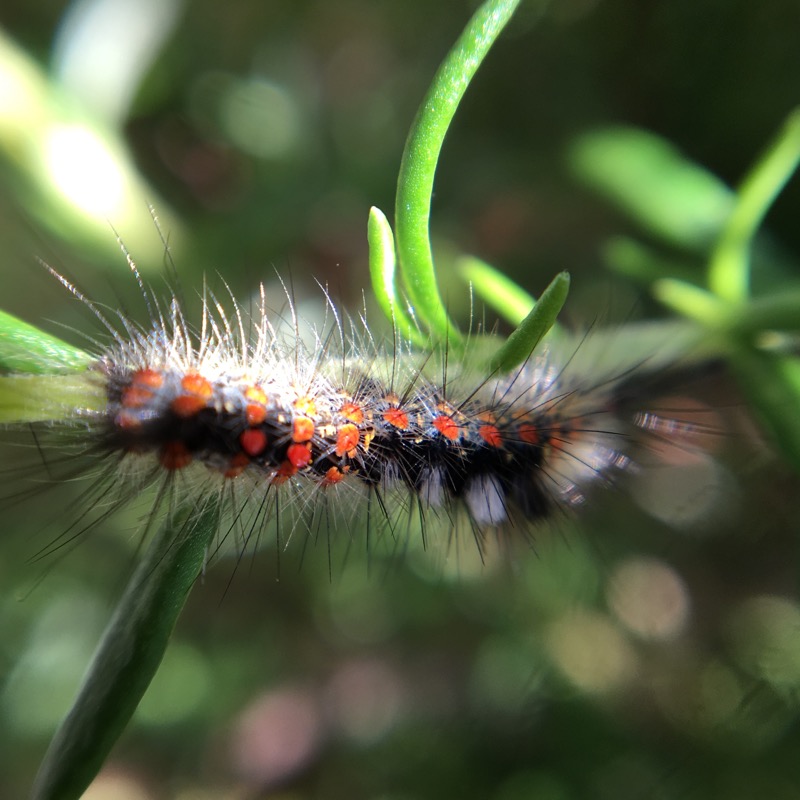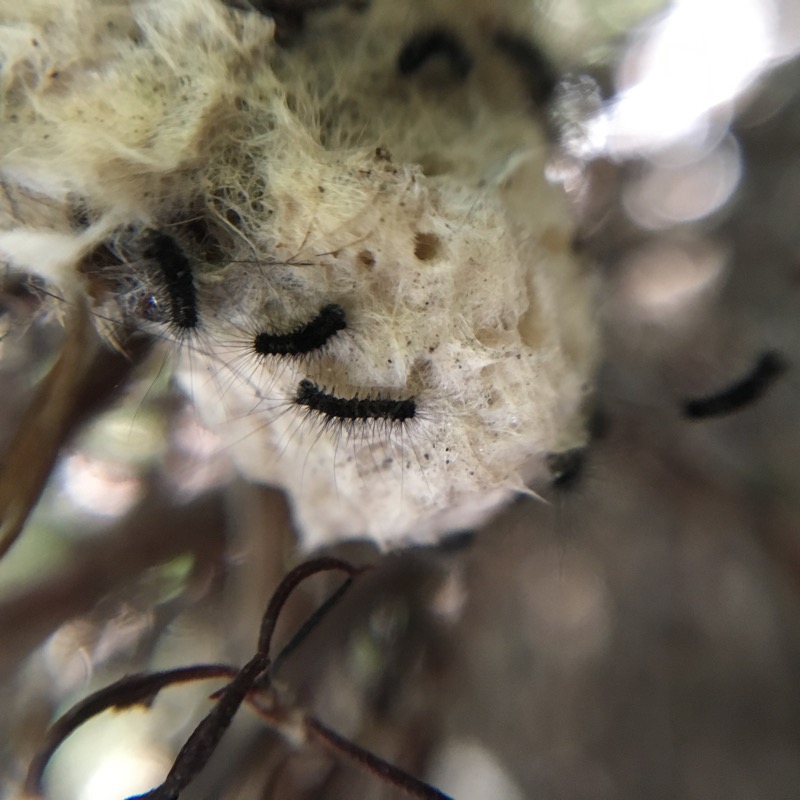
The Tussock moth’s eggs begin to hatch in late February and the young larvae feed on the remaining egg mass. These moths have an ingenious way of dispersing themselves. They spin a silk thread used to “balloon” for dispersal. Because the female is flightless, the young use this technique as the major form of moving around. By their second instar, the larvae are recognizable because of their notable short hair pencils that cover their back. Other distinct characteristics of the larvae are the black setae hair pencils that extend forward from their prothorax and the dorsal tussocks on the first four abdominal segments.

Adults emerge from mid-April to early May. The males are small and a dull brown color with prominent antennae. The females are flightless, they are brachypterous (short-winged) and stay on the cocoon. They release a pheromone to attract males to them for mating. Eggs masses are laid directly on the cocoon. The female covers the eggs with a secretion and covers them with setae from their bodies to create a protective layer over the eggs. The egg stage is the overwintering stage of these moths and will remain dormant until next Spring.
Keep your eyes out for these spectacular caterpillars on your next visit to the park as you enjoy the Spring bloom and the creatures that accompany it.
